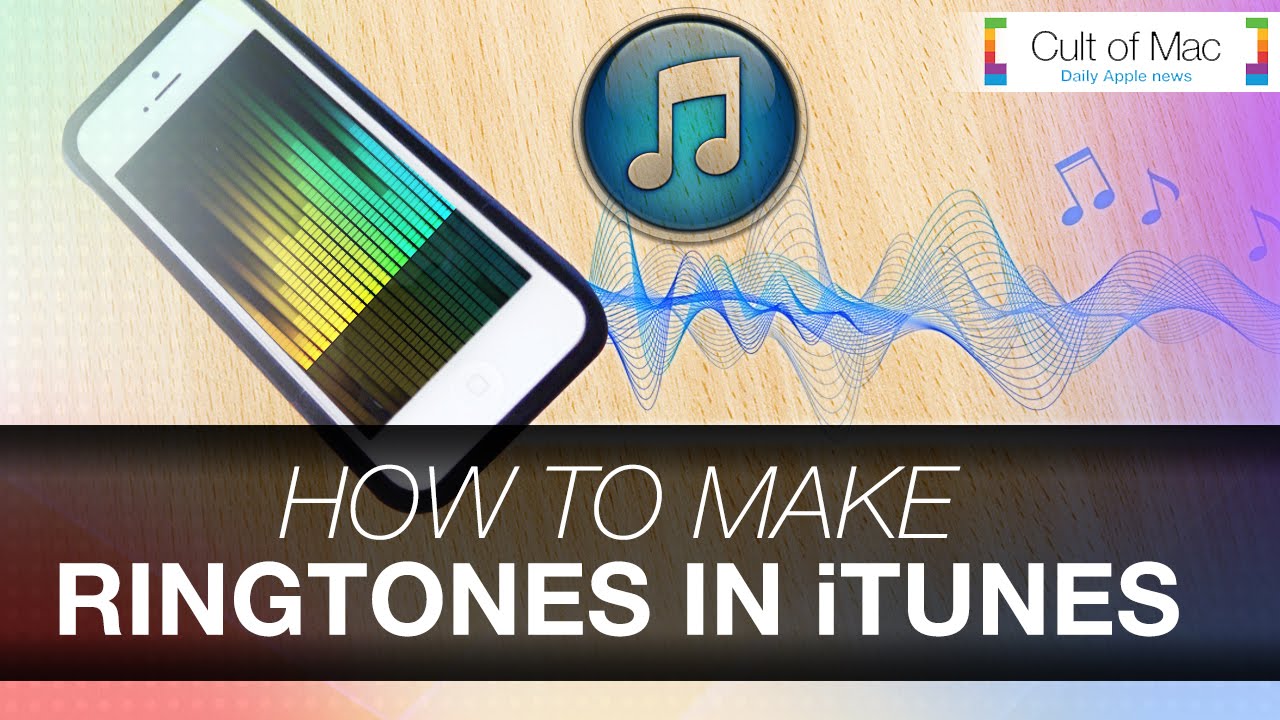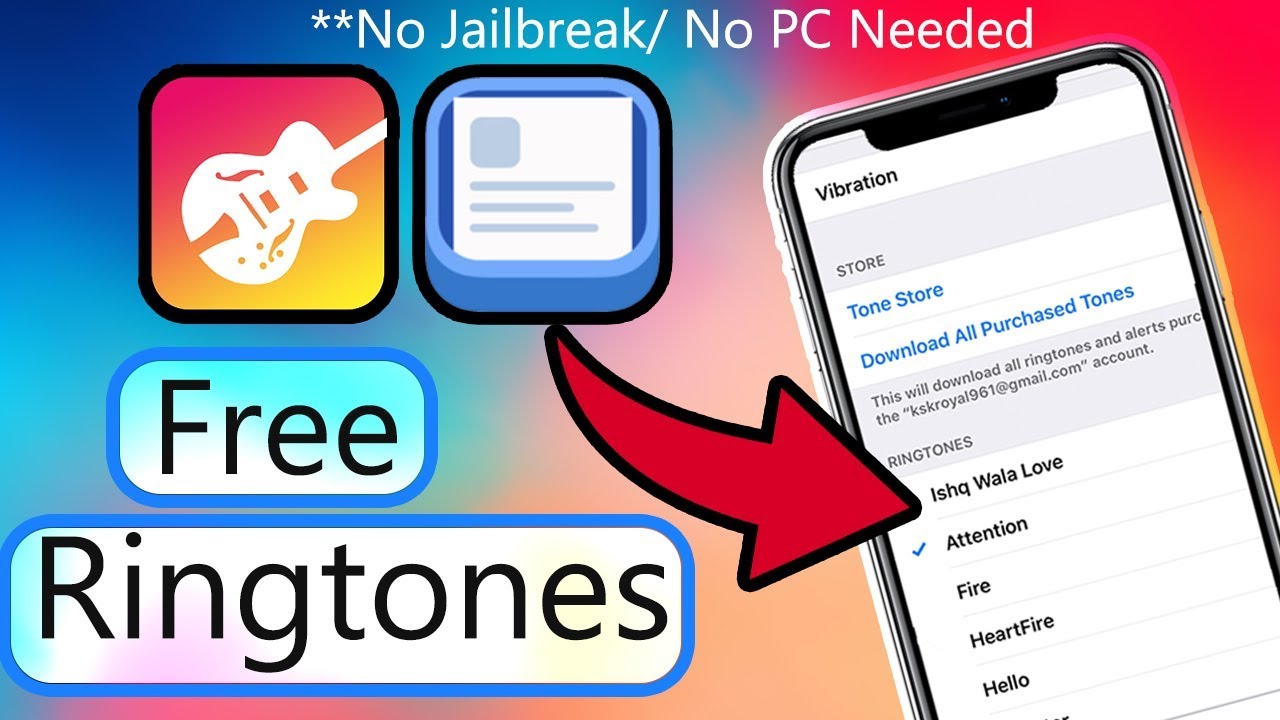Have you ever wanted to turn your favorite YouTube song into a ringtone? You're not alone! Many people love personalizing their phones with unique sounds that reflect their style. The good news is that creating ringtones from YouTube songs is easier than you think. In this guide, we’ll walk you through the process, ensuring your phone rings with your favorite beats in no time. Ready to get started? Let’s dive in!
Step-by-Step Guide to Downloading YouTube Audio

Downloading audio from YouTube is a straightforward process, but it’s essential to follow the right steps to ensure quality and legality. Here’s how you can do it:
- Choose Your YouTube Video: First, find the YouTube video that contains the song you want to download. Take note of the video link, as you'll need it in the next steps.
- Select a Reliable Converter: There are many online tools available for converting YouTube videos to audio files. Some popular options include:
- Copy the Video Link: Go back to YouTube, click on the video, and copy the URL from the address bar.
- Paste the Link into the Converter: Open your chosen converter and paste the YouTube link into the designated area. Most converters will have a clear input box for this.
- Select Audio Format: Choose the audio format you want. The most common formats for ringtones are MP3 and M4A. If you’re not sure, MP3 is a safe bet!
- Convert the Video: Click the “Convert” button. The process may take a few moments, depending on the length of the video and the converter’s speed.
- Download the Audio File: Once the conversion is complete, a download link will appear. Click on it to save the audio file to your device. Make sure to remember the location where you save it!
And voilà! You now have the audio file from your favorite YouTube video ready to be turned into a ringtone. Keep an eye out for the next steps, where we’ll discuss how to customize and set your new ringtone. Enjoy your new sound!
Also Read This: Which YouTubers Live in Las Vegas? A Look at Creators in Sin City
3. Converting YouTube Audio to Ringtone Format

So, you’ve found that perfect YouTube song that you want as your ringtone. Now it’s time to convert that audio into a format suitable for your phone. Let’s break down the process into simple steps!
Firstly, you’ll need a reliable audio converter. There are plenty of options available online, but I recommend using Online Audio Converter or YTMP3.cc. These tools are user-friendly and don’t require you to download any software.
Here’s how to do it:
- Copy the YouTube Link: Go to YouTube, find the video you want, and copy its URL from the address bar.
- Visit the Converter Site: Open your chosen audio converter in a new tab.
- Paste the URL: Look for a field that allows you to paste the link. Simply paste your copied URL there.
- Choose the Format: Most ringtones are in MP3 or M4R format (especially for iPhones). Select your desired format from the dropdown menu.
- Start the Conversion: Hit the convert button and wait a few moments while the magic happens!
- Download Your Audio: Once the conversion is complete, there will be a download link. Click it to save your new ringtone to your computer.
Voila! You now have your desired song in ringtone format. Remember to check the quality settings if available; you want your ringtone to sound crisp, right?
Before we move on, a quick tip: If you only want a specific part of the song (maybe that catchy chorus), many converters allow you to trim the audio. Just look for a feature that lets you set start and end times. This way, you won’t have to listen to a lengthy intro every time your phone rings!
Also Read This: Does YouTube Offer ESPN+? Exploring Sports Streaming Options
4. Transferring Ringtones to Your Device
Now that you’ve created your custom ringtone, it’s time to get it onto your phone. The method you choose will depend on whether you’re using an iPhone or an Android device. Let’s explore both!
For iPhone Users:
Transferring ringtones to an iPhone can be a bit tricky, but don’t worry; you’ve got this!
- Connect Your iPhone to Your Computer: Use a USB cable to connect your device.
- Open iTunes: Launch iTunes on your computer. Make sure it’s the latest version!
- Add the Ringtone: Go to the “File” menu, select “Add File to Library” and choose your new ringtone file.
- Sync Your iPhone: Click on the iPhone icon in iTunes, then go to the “Tones” section. Make sure your new ringtone is checked and hit “Sync.”
And just like that, your new ringtone should be available in the settings on your iPhone!
For Android Users:
Transferring ringtones to an Android device is generally much simpler.
- Connect Your Android to Your Computer: Again, use a USB cable to connect your phone.
- Open File Explorer: On your computer, navigate to your Android device (it should appear as a drive).
- Find the Ringtones Folder: Open the “Ringtones” folder. If it doesn’t exist, you can create one.
- Copy and Paste: Drag your new ringtone file from your computer into this folder.
- Disconnect and Set Your Ringtone: Safely eject your phone, and go to Settings > Sounds > Ringtone to select your new tune.
And there you have it! With these straightforward steps, you’ll be rocking your favorite tunes every time your phone rings. Enjoy your personalized ringtone!
Also Read This: Is There a Problem with YouTube TV Right Now? Live Updates
5. Customizing Your Ringtones
Once you've successfully extracted a song from YouTube to create your ringtone, the fun really begins! Customizing your ringtones can add a personal touch and make your phone truly yours. Here are some tips to get you started:
- Choose the Right Segment: Start by selecting the part of the song that resonates with you the most. Whether it’s a catchy chorus or an emotional bridge, make sure it’s something you won’t tire of quickly. Most ringtone apps allow you to trim the audio to get that perfect snippet.
- Add Effects: Want to spice things up? Consider adding sound effects or fading in and out. Many audio editing apps provide options for effects like reverb or echo that can enhance the listening experience. Just don’t overdo it—sometimes, less is more!
- Experiment with Volume: When customizing, don’t forget to adjust the volume levels. A ringtone that’s too loud might startle you, while one that’s too soft might not get your attention. Test it out to find the sweet spot.
- Include Personal Touches: If you’re feeling adventurous, think about recording a personal message or a funny sound bite to incorporate into your ringtone. This can make your ringtone not just a sound but a fun reminder of something special.
After customizing, make sure to save your work in the correct format for your device. Most smartphones will accept formats like MP3 or M4R, depending on whether you’re an Android or iPhone user. Once saved, upload the ringtone to your phone and set it as your default or assign it to specific contacts for an extra touch of personalization.
Also Read This: Identifying Fake YouTubers: Red Flags and Tips to Spot Inauthentic Content
6. Legal Considerations When Using YouTube Music
Before diving headfirst into creating ringtones from YouTube music, it's essential to navigate the legal landscape. Understanding copyright laws can save you a lot of trouble down the line. Here are some key points to keep in mind:
- Copyright Ownership: Music on YouTube is generally protected by copyright. This means the original creators or their record labels hold rights over their work. Using their music without permission for public projects or distribution can lead to legal issues.
- Fair Use vs. Copyright Infringement: Some people often refer to “fair use” as a loophole, but it's more nuanced than that. Fair use can apply in cases of commentary, criticism, or education, but turning a song into a ringtone for personal use typically doesn’t fall under this category.
- Creative Commons Licenses: Some artists upload their music under Creative Commons licenses, which allow for certain uses without permission. Make sure to check the licensing terms to see if you can legally use the music for your ringtone.
- Commercial Use: If you plan to share your ringtone with others, especially for commercial purposes, you’ll need explicit permission from the copyright owner. Selling ringtones created from copyrighted music without permission is a big no-no.
- Stay Informed: As laws and regulations change, keeping up with the latest legal guidelines surrounding music use is crucial. Following industry news or consulting legal advice can help you navigate these waters safely.
In summary, while creating ringtones from YouTube songs can be a fun and rewarding activity, it’s essential to respect the rights of the original artists. Always strive to use music legally and ethically to support the creators you love!
Also Read This: How to Download YouTube Videos to Flash Drive for Easy Transfer
7. Additional Tips for Ringtone Creation
Creating ringtones from YouTube songs can be a fun and rewarding process! Here are some additional tips to enhance your ringtone creation experience:
- Choose the Right Song: Not every song makes a great ringtone. Look for catchy hooks or memorable choruses that will stand out when your phone rings. Songs with a clear and distinct sound will be more recognizable.
- Use Editing Software: While some apps and websites allow for quick edits, using dedicated software like Audacity can provide more control. You can adjust volumes, add effects, or even mix multiple tracks to create a unique sound.
- Keep It Short and Sweet: Ringtones are typically 20-30 seconds long. Try to capture the essence of the song within this timeframe. If you find a longer section you love, consider fading the end to ensure a smooth loop.
- Experiment with Effects: Adding reverb, echo, or filters can give your ringtone a polished feel. Just don’t overdo it—keeping it simple often results in a more pleasant listening experience.
- Check Volume Levels: Make sure the ringtone isn’t too loud or too soft. Test it out on your device to ensure it’s at a comfortable volume. You want it to be heard, but not so loud that it’s jarring.
- Test Different Formats: Depending on your phone, different audio formats like MP3, M4R, or WAV may be required. Check your device’s specifications before finalizing your ringtone to ensure compatibility.
- Share and Get Feedback: Share your newly created ringtones with friends or family to see what they think. Sometimes, a fresh set of ears can provide valuable feedback that can help improve your creation.
By keeping these tips in mind, you can create ringtones that not only sound great but also reflect your personality and style. So, roll up your sleeves and let your creativity flow!
8. Conclusion: Enjoy Your Personalized Ringtones
Creating personalized ringtones from your favorite YouTube songs is a fantastic way to add a personal touch to your phone. Whether you want a fun, upbeat song to brighten your day or a chill tune for those quiet moments, the possibilities are endless!
Remember, the key is to enjoy the process. Don’t rush through it; take the time to experiment with different songs, editing techniques, and formats. With a little patience and creativity, you can transform any YouTube song into a ringtone that resonates with you and suits your style.
So, what are you waiting for? Dive into your music library, grab your favorite tracks, and start creating! Before you know it, you’ll have a collection of unique ringtones that make your phone feel like an extension of yourself.
Happy ringtone making!
 admin
admin








